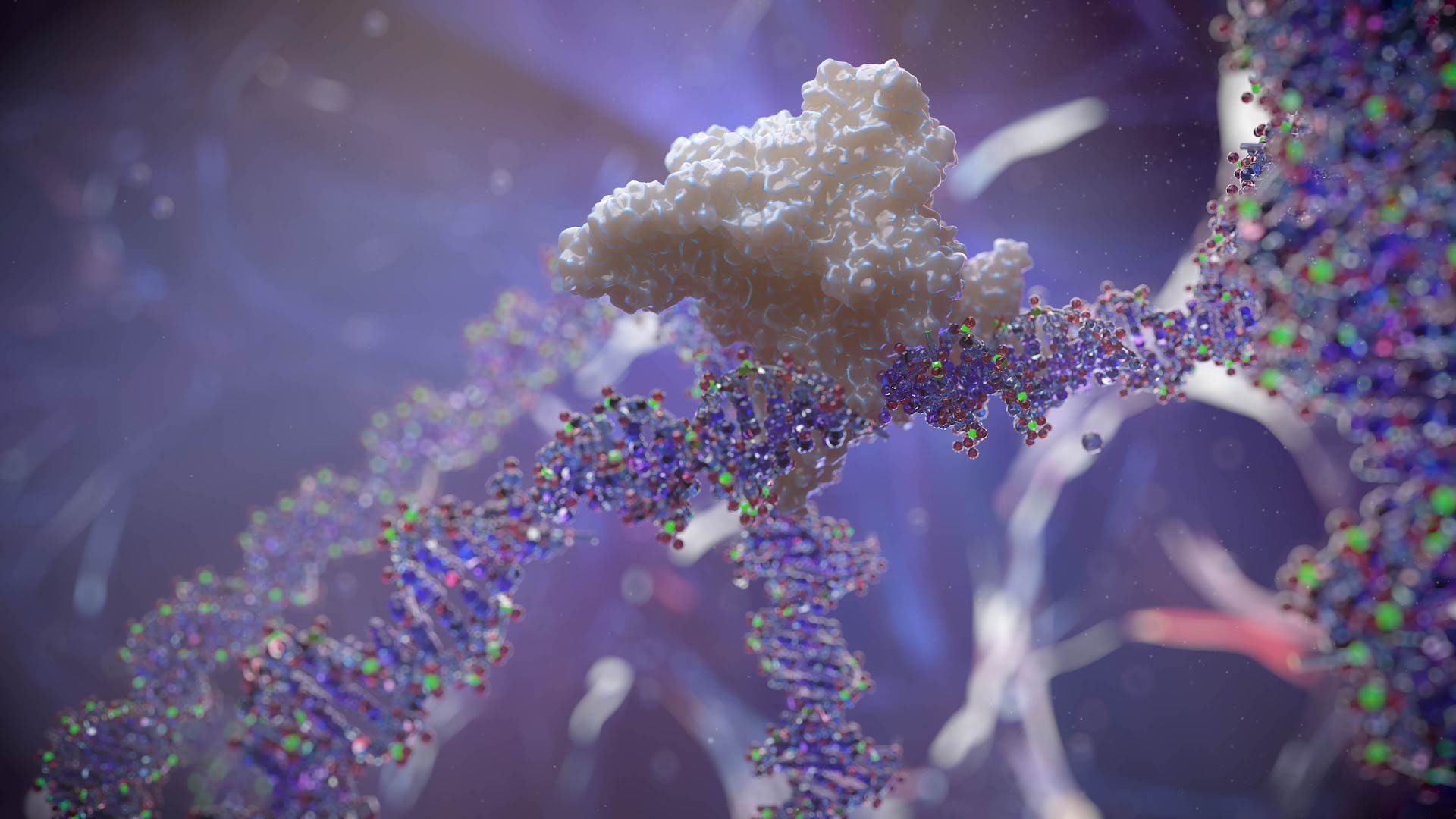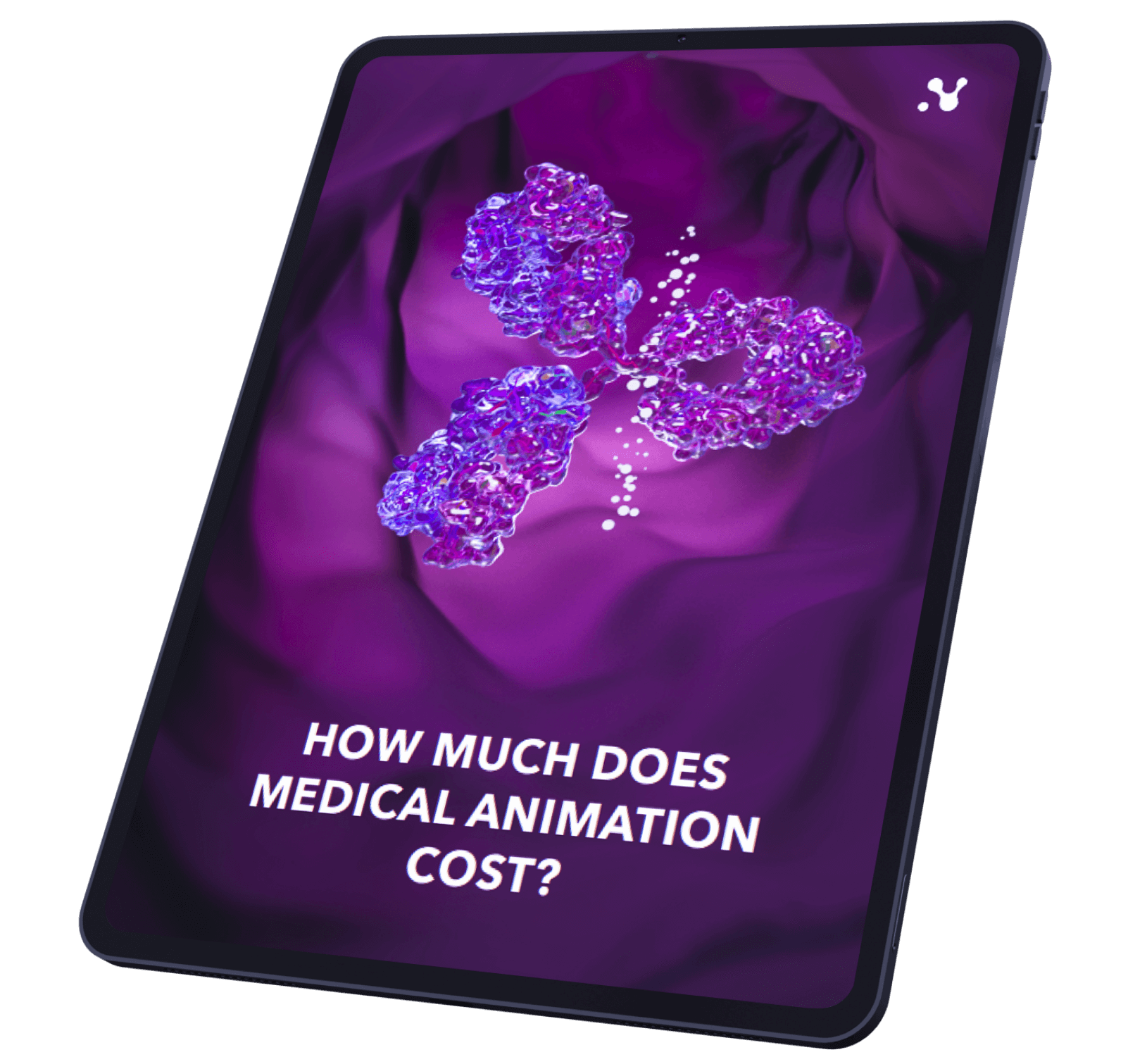Foxo-1 inhibitor. Diabetes. Case Study
- Approximately 463 million adults (20-79 years) were living with diabetes in 2019; by 2045 this will rise to 700 million
- The proportion of people with type 2 diabetes is increasing in most countries
- 79% of adults with diabetes were living in low- and middle-income countries in 2019.
- 1 in 5 of the people who are above 65 years old have diabetes
Diabetes caused 4.2 million deaths
Diabetes is caused by the body’s inability to create or effectively use its own insulin, which is produced by islet cells found in the pancreas. Insulin helps regulate blood sugar (glucose) levels – providing energy to body cells and tissues.
- Without insulin, the body’s cells would be starved, causing dehydration and destruction of body tissue.
- People with type 1 diabetes must have insulin delivered by injection or a pump to survive.
Many people with type 2 diabetes can control their blood glucose by following a healthy meal plan and a program of regular physical activity, losing excess weight, and taking medications. Medications for each individual with diabetes will often change during the course of the disease. Insulin also is commonly used to control blood glucose in people with type 2 diabetes.In this project produced for Forkhead Bio, USA-based biotech startup, we had to show the mechanism of action (MOA) of FOXO1 inhibitor, a transcription factor that inhibits the protein that triggers insulin production in the gut villi cells.
The video starts with the company logo and narration text. The next scene follows by interactive illustrated statistic data about diabetes.
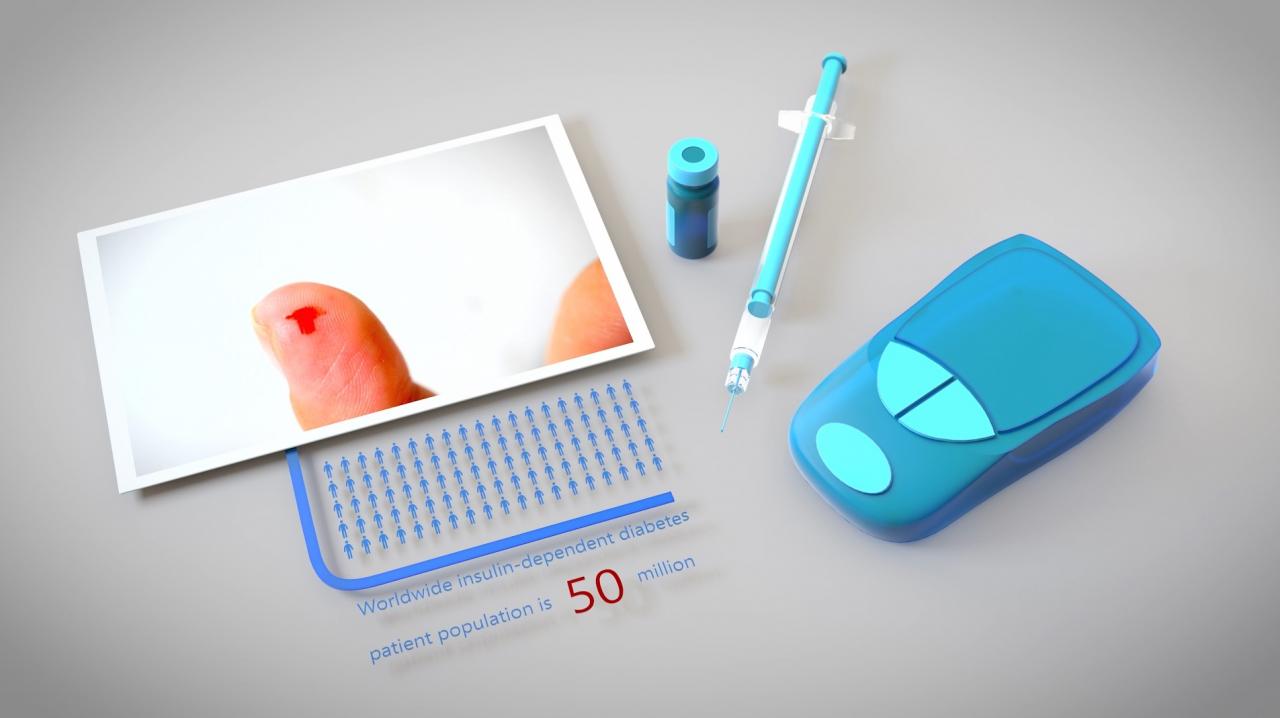
The option of infographic style
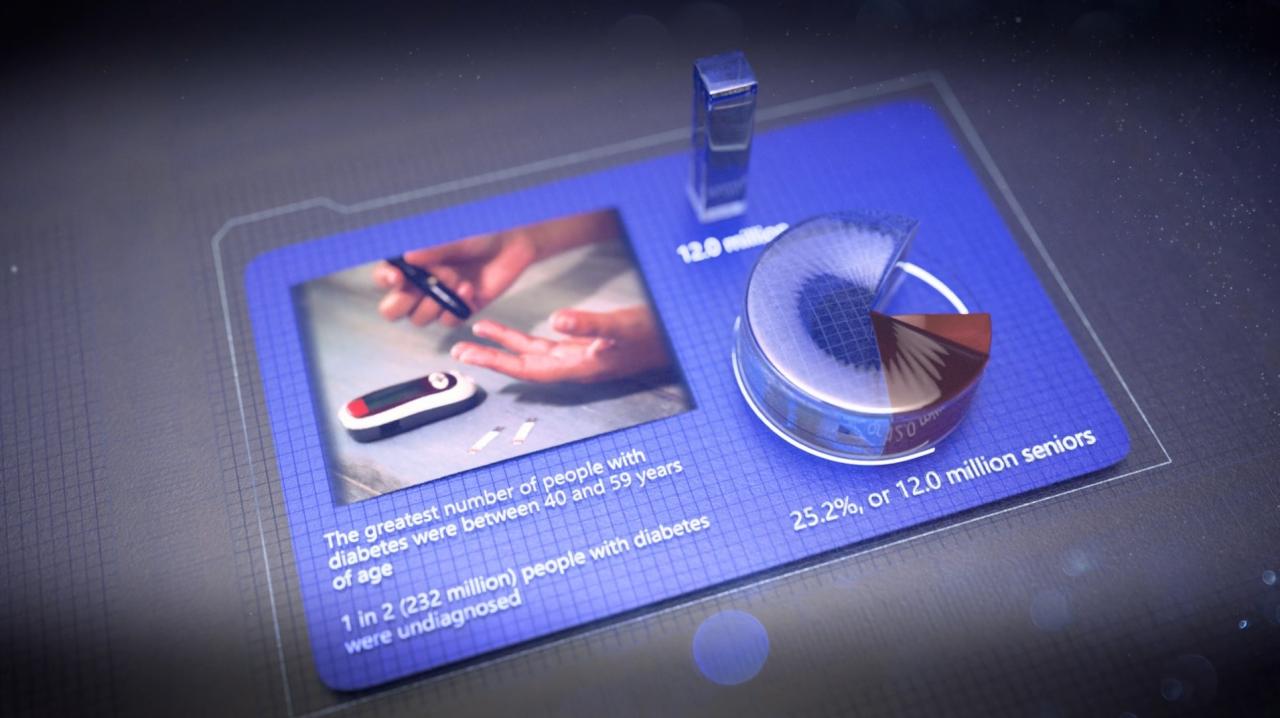
Next, we can see a pill moving toward the intestine. It`s dissolved and later delivered exactly at the target point.
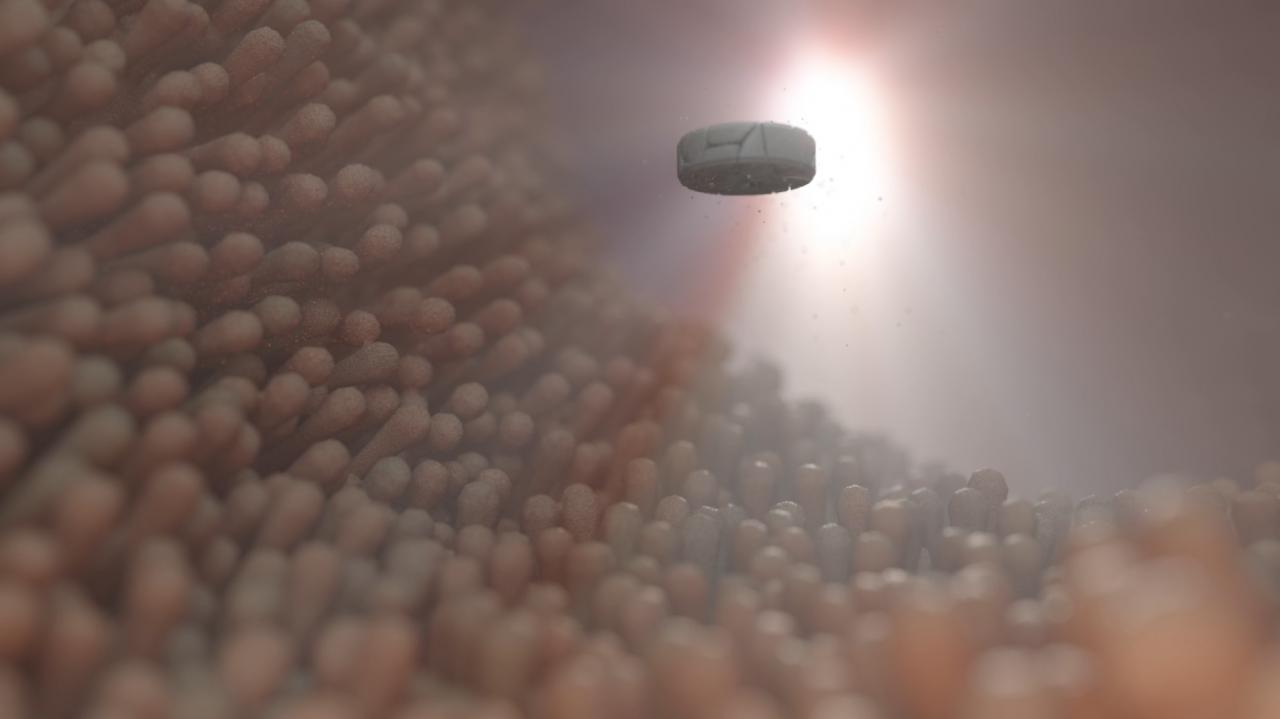
Active ingredient (API) molecules are floating around a villus. Endocrine progenitor cells (located at the base of the villi) are highlighted, and camera dives into the villi cells.
Molecules enter the nucleus where inhibition of FOXO1 takes place, and we can see that gene transcription stops.
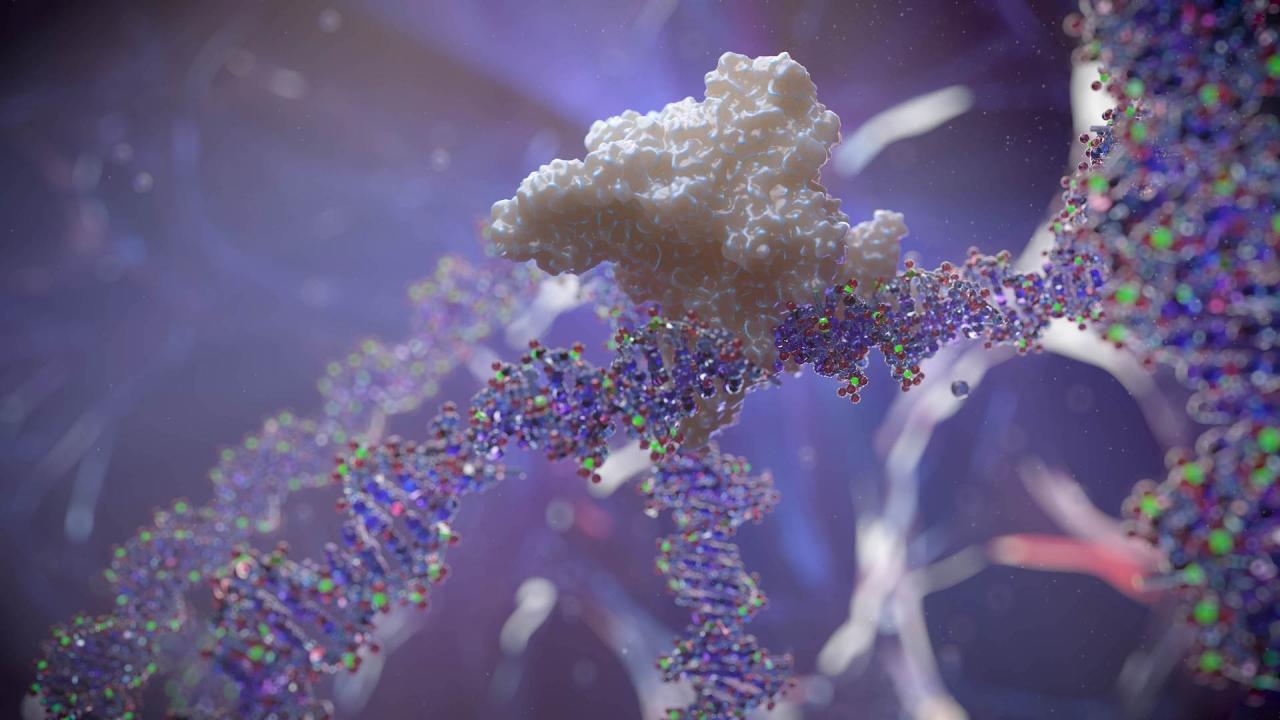
The camera moves back, and we can see the villi cells. Some endocrine progenitor cells are activated (supported by a light effect) and start to migrate up the villi (along with the rest of the epithelial cells).
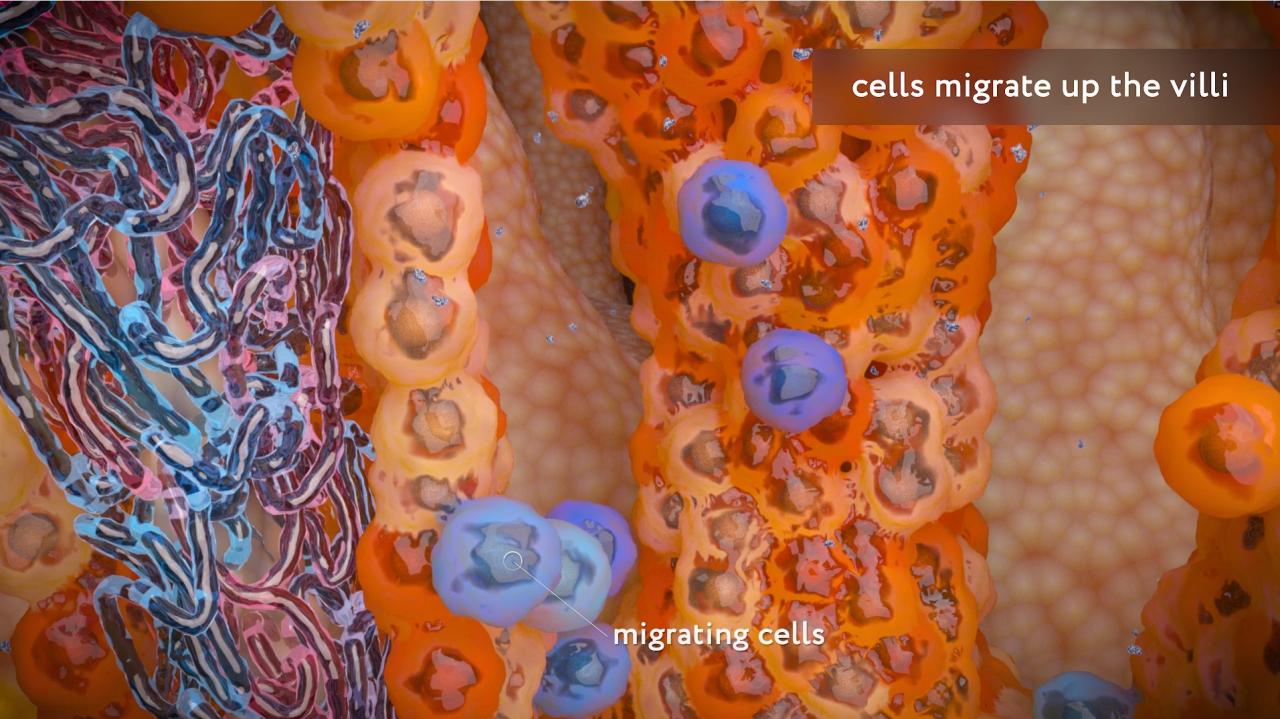
At the same time, their color and form change a bit – signs of differentiation. Then they start to process proinsulin molecules into mature insulin and release insulin from the basolateral side.
Next, we can see the insulin molecules move into the bloodstream
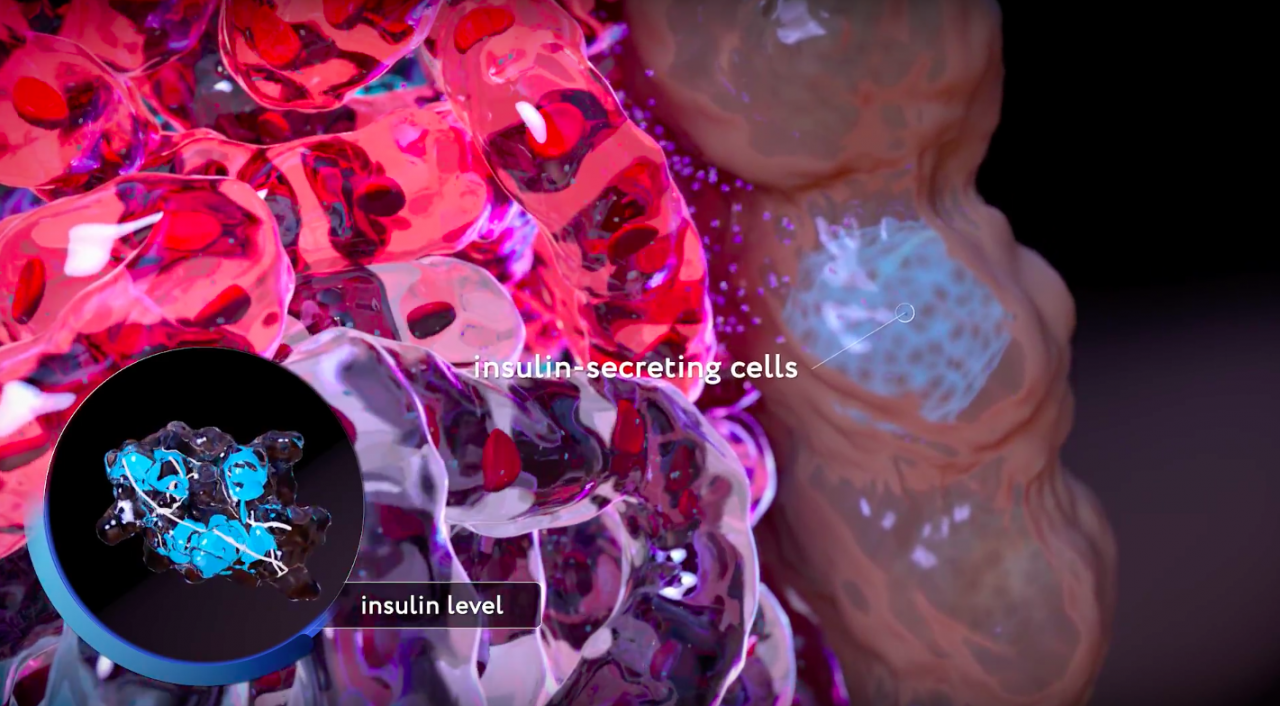
At one side of the scene, we can see a picture of the vessels showing a high blood glucose level.
In the end, we show infographics depicting many inconveniences caused by other treatment and diagnostic methods (injections, glucometers, and need in lifestyle control), which are replaced by one pill—next, the text information about intermittent dosing recommendations follows.
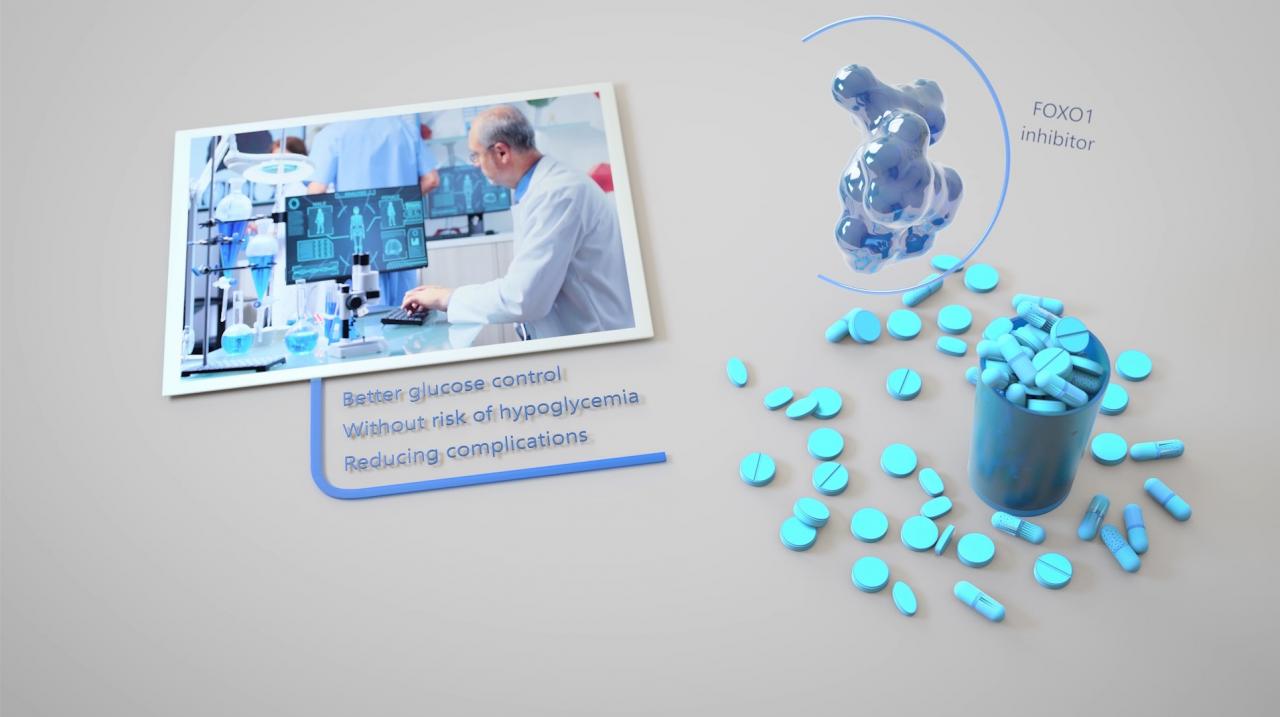
Production facts:
- We did preliminary research to come up with every molecule shape, and FOXO1 shape.
- We used different 3D CGI approaches to simulate and visualize gut villi and cell migration.
- The most challenging was the infographics section’s creative ideas development. We did a couple of different set-ups before our client’s team chose the one they loved best.
- The length of the project was enlarged from 120 sec to 180 sec after the storyboard stage.
- Due to a strict budget, some scenes were low in quality that helped match to the allotted budget.
Project development timeline: 3 min video was developed in 8 weeks, starting from the research part to the Final version—at an extremely rapid pace.
We are glad to provide our client with the video that helps them to explain the Mechanism of Action of their FOXO-1 inhibitor. All done within a strict timeline and their estimated budget.

